

Articles
How To Store Bacon
Modified: March 1, 2024
Learn the best ways to store bacon in this helpful article. Get tips for preserving its freshness and flavor for longer.
(Many of the links in this article redirect to a specific reviewed product. Your purchase of these products through affiliate links helps to generate commission for Storables.com, at no extra cost. Learn more)
Introduction
When it comes to bacon, most people can agree that it’s one of life’s greatest culinary pleasures. The crispy, savory, and smoky flavor can elevate any dish, from breakfast classics to gourmet recipes. But to fully enjoy the deliciousness of bacon, it’s crucial to store it properly. Incorrect storage methods can lead to spoilage, loss of flavor, and potential foodborne illnesses.
In this article, we will explore the importance of proper bacon storage and provide step-by-step guidelines on how to store bacon effectively. Whether you buy bacon in bulk or have some leftovers that you want to save, following these tips will help you maintain the quality and freshness of your bacon for longer periods.
By understanding the best practices for bacon storage, you can avoid unnecessary waste, save time and money, and always have delicious bacon ready to enhance your meals.
Key Takeaways:
- Proper bacon storage maintains flavor, reduces waste, and prevents foodborne illnesses. Choose airtight packaging, refrigerate, freeze, vacuum-seal, label, and organize for optimal freshness and convenience.
- Thaw frozen bacon safely and cook promptly. Proper storage methods ensure bacon remains delicious, versatile, and ready to elevate your culinary creations.
Read more: How To Store Cooked Bacon
Importance of Proper Bacon Storage
Proper bacon storage is essential for several reasons. Firstly, it helps to maintain the quality and flavor of the bacon. When exposed to air and improper temperatures, bacon can quickly become stale, losing its signature smoky taste and crispy texture. By storing bacon correctly, you can preserve its deliciousness and enjoy a consistently satisfying eating experience.
Secondly, storing bacon properly reduces the risk of foodborne illnesses. Bacon is a perishable food that contains high levels of salt and moisture, making it an ideal breeding ground for bacteria if not stored correctly. Storing bacon at the appropriate temperature and in suitable packaging minimizes the growth of harmful microorganisms, protecting you and your loved ones from potential health hazards.
Proper bacon storage also helps to minimize food waste. We all know the disappointment of discovering a pack of bacon that has gone bad or has been improperly stored and is no longer edible. By following the guidelines for bacon storage, you can extend its shelf life and reduce the likelihood of throwing away spoiled or wasted bacon.
Lastly, by correctly storing bacon, you can take advantage of opportunities to buy in bulk or on sale. Purchasing bacon in larger quantities can be more cost-effective, but it’s only beneficial if you can store it properly to maintain its quality. With the right storage techniques, you can stock up on bacon without worrying about it going bad, saving you money in the long run.
Overall, understanding the importance of proper bacon storage is crucial for ensuring its optimal taste, reducing the risk of foodborne illnesses, minimizing waste, and taking advantage of cost-saving opportunities. Now, let’s dive into the step-by-step process of storing bacon so you can enjoy its amazing flavors for a longer period.
Step 1: Choosing the Right Packaging
The first step in proper bacon storage is selecting the right packaging. When purchasing bacon from the store, it often comes in a plastic wrap or a sealed package. However, these original packages may not provide optimal protection from air and moisture in the long run.
To ensure the freshness and quality of your bacon, it’s recommended to transfer it into airtight packaging. There are a few options to consider:
- Zip-top bags: These are a convenient and affordable choice for storing bacon. Make sure to squeeze out any excess air when sealing the bag to create an airtight environment.
- Plastic wrap and aluminum foil: If you prefer to wrap individual portions of bacon, you can use plastic wrap followed by aluminum foil. This double layer of protection helps to prevent air and moisture from reaching the bacon.
- Plastic storage containers: Another option is to use plastic containers with tight-fitting lids. These containers provide excellent protection against air and moisture, keeping your bacon fresh.
Whichever packaging method you choose, ensure that it is clean and free from any debris or contaminants. Remember, the goal is to create a barrier between the bacon and the external environment to maintain its quality.
Once you have the appropriate packaging ready, you can move on to the next step: refrigerating the bacon.
Step 2: Refrigerating Bacon
Refrigeration is a crucial step in the bacon storage process, as it helps to maintain a consistently cool temperature, preventing the growth of bacteria and extending the shelf life of the bacon.
Follow these guidelines when refrigerating bacon:
- Unopened packages: If the bacon is still in its original, unopened package, keep it refrigerated at a temperature between 32°F (0°C) and 40°F (4°C). Place it in the coldest part of your refrigerator to ensure a consistently cool environment.
- Opened packages: If you have already opened the package, ensure it is tightly wrapped to prevent air exposure. You can use the original packaging, as long as it provides a tight seal. Alternatively, transfer the bacon to the airtight packaging options mentioned earlier.
- Refrigerator organization: It’s important to store bacon away from other foods to avoid cross-contamination. Place it on a lower shelf or in a separate drawer to prevent any potential drippings from contaminating other items. You can also use a tray or plate underneath the bacon to catch any drippings.
Remember to always check the expiration date on the package and use your senses to determine if the bacon is still fresh. Look for any signs of discoloration, foul odors, or sliminess, which can indicate spoilage. If the bacon shows any of these signs, it’s best to discard it.
By refrigerating the bacon properly, you can extend its freshness and ensure that it’s always ready to be cooked or added to your favorite recipes. The next step will cover freezing bacon for long-term storage.
Step 3: Freezing Bacon
Freezing bacon is an excellent option when you want to store it for an extended period. Whether you bought bacon in bulk or have leftovers that you want to preserve, freezing can help maintain its quality.
Follow these steps to freeze bacon properly:
- Slice separation: If the bacon is in one big chunk, separate the slices before freezing. This makes it easier to thaw and use only the amount you need without defrosting the entire package.
- Wrap in plastic: Individually wrap each slice or a small number of slices tightly in plastic wrap. This will help prevent freezer burn and maintain the quality of the bacon.
- Zip-top bags: Place the wrapped slices in airtight zip-top bags to provide an additional layer of protection and prevent any potential odors from seeping into the bacon.
- Remove excess air: Squeeze out as much air as possible from the zip-top bags before sealing them. This minimizes the chances of freezer burn and helps preserve the flavor and texture of the bacon.
- Label and date: Write the date of freezing on the zip-top bags to keep track of the storage time. It’s also helpful to label the bags with the number of slices or portions inside for easy identification when needed.
- Freezer placement: Store the bacon in the coldest part of the freezer to maintain a consistently low temperature. Avoid placing it near the front or on the door, where it may be subject to temperature fluctuations.
When properly frozen, bacon can last in the freezer for up to three months without compromising its quality. However, for the best flavor and texture, try to use it within one to two months.
Now that you know how to freeze bacon effectively, let’s move on to the next step: vacuum-sealing bacon for even better preservation.
Store bacon in the refrigerator in its original packaging or a resealable plastic bag. If opened, wrap in foil or plastic wrap. Use within 1 week of opening.
Read more: How To Store Bacon Grease In The Freezer
Step 4: Vacuum-Sealing Bacon
Vacuum-sealing is an excellent method for preserving the quality and extending the shelf life of bacon. This technique removes air from the packaging, creating a seal that helps prevent freezer burn and maintains the bacon’s flavor and texture.
Here’s how to vacuum-seal bacon:
- Prepare the bacon: Follow the steps mentioned earlier to separate the slices and wrap them in plastic. Make sure each slice is individually wrapped.
- Vacuum-sealing equipment: Use a vacuum-sealer machine or a handheld vacuum sealer specifically designed for food packaging. These devices remove the air from the packaging, creating a tight seal.
- Place the wrapped bacon: Put the individually wrapped bacon slices into a vacuum-seal bag or roll.
- Seal the bag: Depending on the type of vacuum-sealer you have, follow the instructions to seal the bag. Ensure it is tightly sealed to prevent air from entering.
- Label and date: Similar to freezing bacon, label the vacuum-sealed bag with the date of packaging. It’s also helpful to indicate the number of slices or portions inside for easy reference later.
- Freezer storage: Store the vacuum-sealed bacon in the coldest part of the freezer, just like you would with regular frozen bacon.
Vacuum-sealing not only helps to protect the bacon from freezer burn, but it also saves space in the freezer by eliminating excess air. This method is especially beneficial if you plan to store bacon for an extended period or want to buy in bulk.
Now that you’ve learned about vacuum-sealing bacon, let’s move on to step 5: properly labeling the bacon for easy identification.
Step 5: Properly Labeling Bacon
Properly labeling bacon is essential for easy identification and organization, especially when you have multiple packages stored in the refrigerator or freezer. Clear labeling helps prevent confusion and ensures that you use the oldest bacon first.
Follow these guidelines for properly labeling bacon:
- Date: Write the date of packaging or freezing on the package. This allows you to keep track of how long the bacon has been stored and helps determine its freshness.
- Quantity: Indicate the quantity of bacon slices or portions inside the package. This information is handy when you only need a specific amount of bacon for a recipe.
- Any additional details: If you have any additional information you’d like to note, such as the type of bacon (e.g., smoked, maple), you can include it on the label.
- Place the label: Attach the label to the bacon packaging using tape or write directly on the packaging material.
By properly labeling your bacon, you can easily identify and select the package you need without having to open or inspect each one. This helps maintain the organization of your refrigerator or freezer and saves time when cooking or meal planning.
Now that you’ve learned about the importance of labeling bacon, let’s move on to step 6: organizing bacon in the refrigerator or freezer for optimal storage.
Step 6: Organizing Bacon in the Refrigerator or Freezer
Proper organization is key to maintaining the quality and accessibility of your stored bacon. By organizing it effectively in the refrigerator or freezer, you can save space and ensure that you always use the oldest bacon first.
Here are some tips for organizing bacon:
- Separate packages: Keep unopened packages of bacon separate from opened or partially used ones. This makes it easier to identify and use the right package without rummaging through multiple packs.
- Stacking or standing: Depending on the available space, you can either stack packages of bacon on top of each other or stand them upright. Stacking is a good option when you have limited shelf space, while standing the packages can help you see and access individual packs more easily.
- Utilize containers or bins: Consider using containers or bins specifically designated for storing bacon. These can help keep the bacon organized, prevent any potential drippings from spreading, and make it easier to retrieve the desired package.
- Rotate stock: To ensure you use the oldest bacon first and maintain freshness, practice the “first in, first out” method. This means placing newly purchased or prepared bacon behind the existing ones, so you reach for the older packages first.
By keeping your bacon organized, you can avoid forgetting about certain packages and prevent any unnecessary food waste.
Now that you’ve learned about organizing bacon, let’s move on to step 7: thawing frozen bacon properly before use.
Step 7: Thawing Frozen Bacon
Thawing frozen bacon properly is essential to maintain its quality and ensure safe consumption. There are a few methods you can use to thaw frozen bacon:
- Refrigerator thawing: The safest method is to thaw bacon in the refrigerator. Simply transfer the frozen bacon from the freezer to the refrigerator and allow it to thaw slowly. This method can take anywhere from a few hours to overnight, depending on the thickness of the slices or the size of the portions.
- Cold water thawing: If you need to thaw bacon quickly, you can use the cold water method. Place the frozen bacon in a leak-proof plastic bag and submerge it in a bowl of cold water. Change the water every 30 minutes to ensure it stays cold. Bacon defrosted using this method is best used immediately.
- Microwave thawing: The microwave can be used for defrosting small portions of bacon. Use the defrost setting or lower power level to thaw the bacon gently. Be cautious not to cook the bacon during the thawing process.
Once the bacon has thawed, it’s important to cook it promptly. Avoid refreezing thawed bacon, as this can affect the quality and texture of the meat.
Now that you know the proper methods for thawing frozen bacon, you are well-equipped to enjoy its deliciousness in your meals.
To recap, we covered the importance of proper bacon storage, including choosing the right packaging, refrigerating bacon, freezing bacon, vacuum-sealing bacon, properly labeling bacon, organizing bacon in the refrigerator or freezer, and thawing frozen bacon. By following these steps, you can ensure that your bacon remains fresh, flavorful, and ready for use.
So go ahead and apply these techniques to your bacon storage routine, and enjoy the convenience and taste of properly stored bacon in all your culinary creations!
Read more: How To Store Homemade Bacon Bits
Conclusion
Properly storing bacon is essential for maintaining its quality, flavor, and safety. By following the step-by-step guidelines in this article, you can ensure that your bacon stays fresh, delicious, and ready to enhance your favorite dishes.
We discussed the importance of choosing the right packaging, whether it’s using zip-top bags, plastic wrap and aluminum foil, or plastic storage containers. Proper packaging helps create an airtight environment, protecting the bacon from air exposure and preserving its taste.
Refrigerating bacon at the appropriate temperature and separating opened and unopened packages helps prevent spoilage and cross-contamination. Freezing bacon, with proper wrapping and airtight packaging, extends its shelf life for long-term storage. Vacuum-sealing bacon provides even better preservation by removing air and preventing freezer burn.
Labeling bacon with the date of packaging, quantity, and any additional details ensures easy identification and helps you use the oldest bacon first. Organizing bacon in the refrigerator or freezer, using containers or practicing the “first in, first out” method, keeps your bacon inventory organized and minimizes waste.
Lastly, we discussed the proper methods for thawing frozen bacon, emphasizing the importance of safe and timely thawing to maintain its quality and ensure safe consumption.
By following these steps and incorporating them into your bacon storage routine, you can enjoy fresh, flavorful bacon for a longer period, reduce food waste, and maximize the value of your purchases.
Remember, bacon is a versatile ingredient that adds a burst of flavor to countless dishes. Proper storage ensures that you always have the perfect bacon on hand to take your breakfast, brunch, or dinner to the next level.
So, let’s start implementing these best practices and elevate your bacon experience to new heights!
Frequently Asked Questions about How To Store Bacon
Was this page helpful?
At Storables.com, we guarantee accurate and reliable information. Our content, validated by Expert Board Contributors, is crafted following stringent Editorial Policies. We're committed to providing you with well-researched, expert-backed insights for all your informational needs.
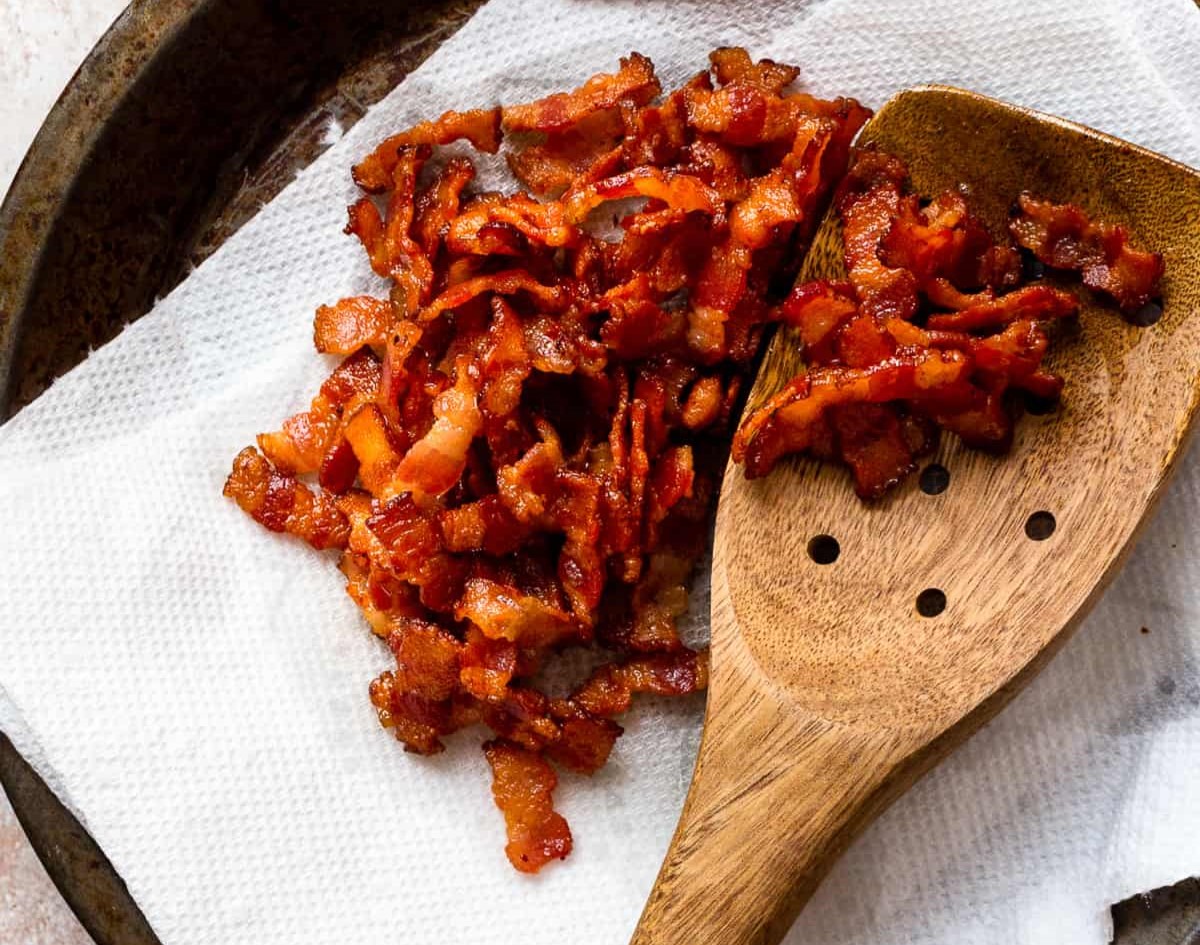
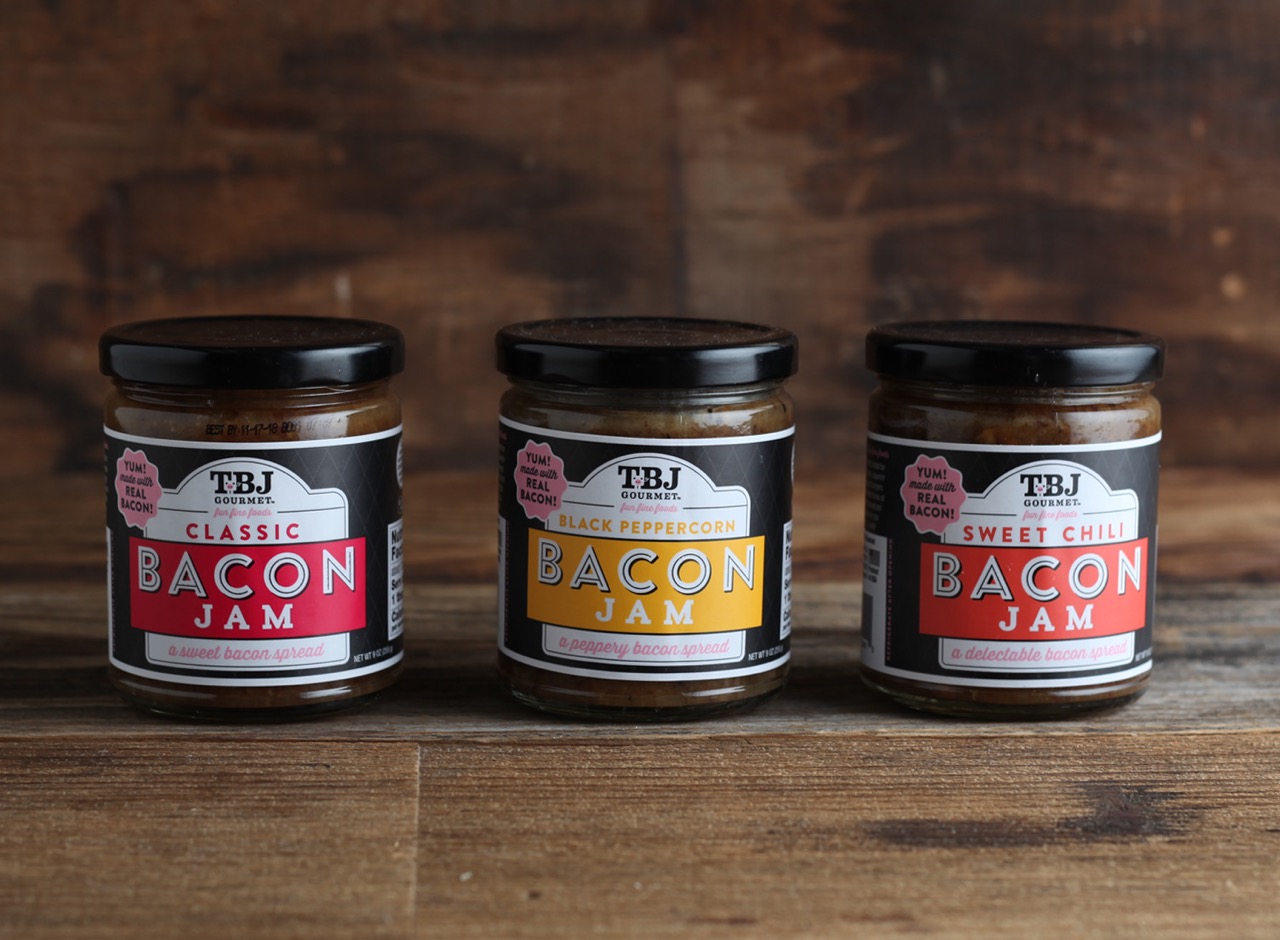
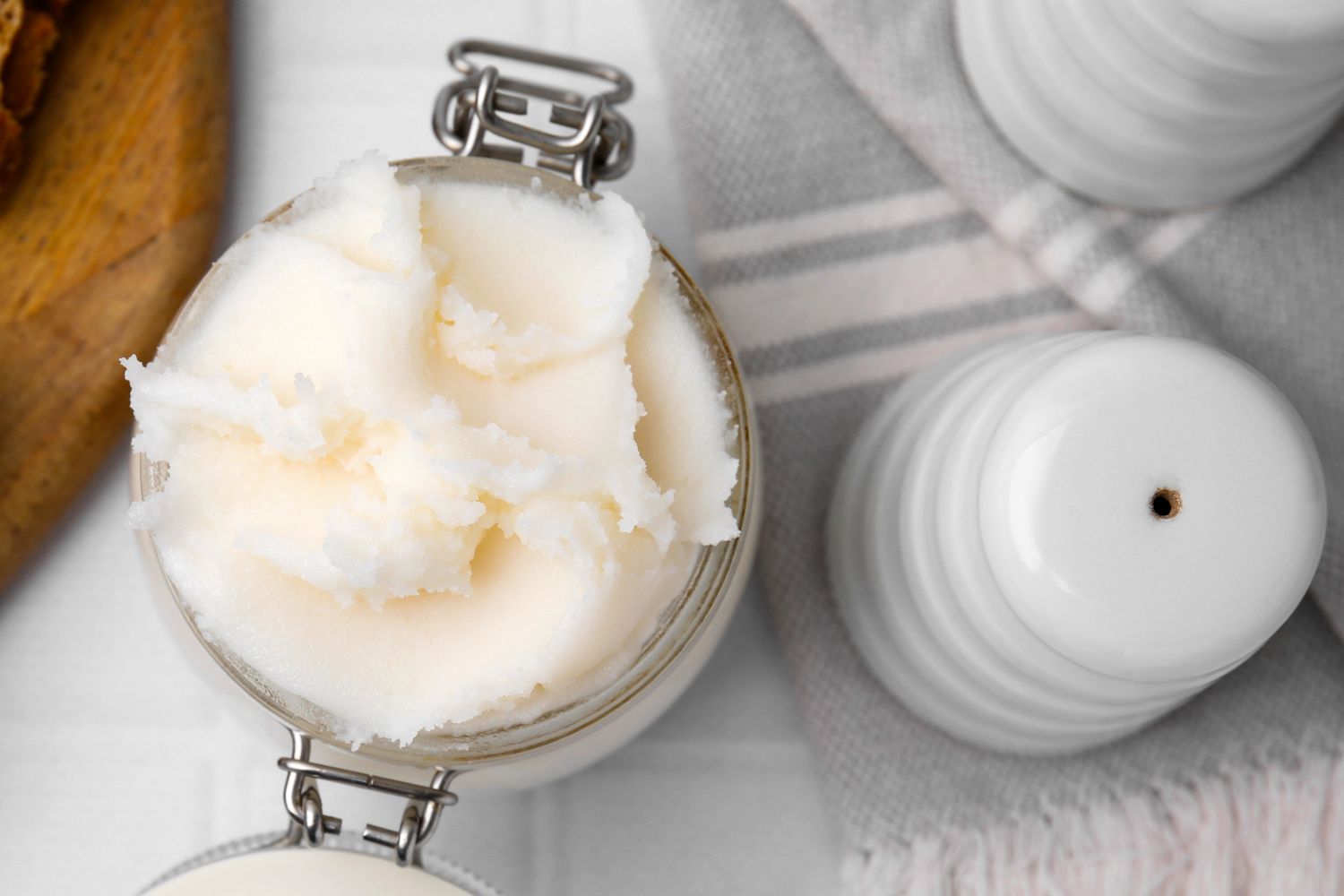

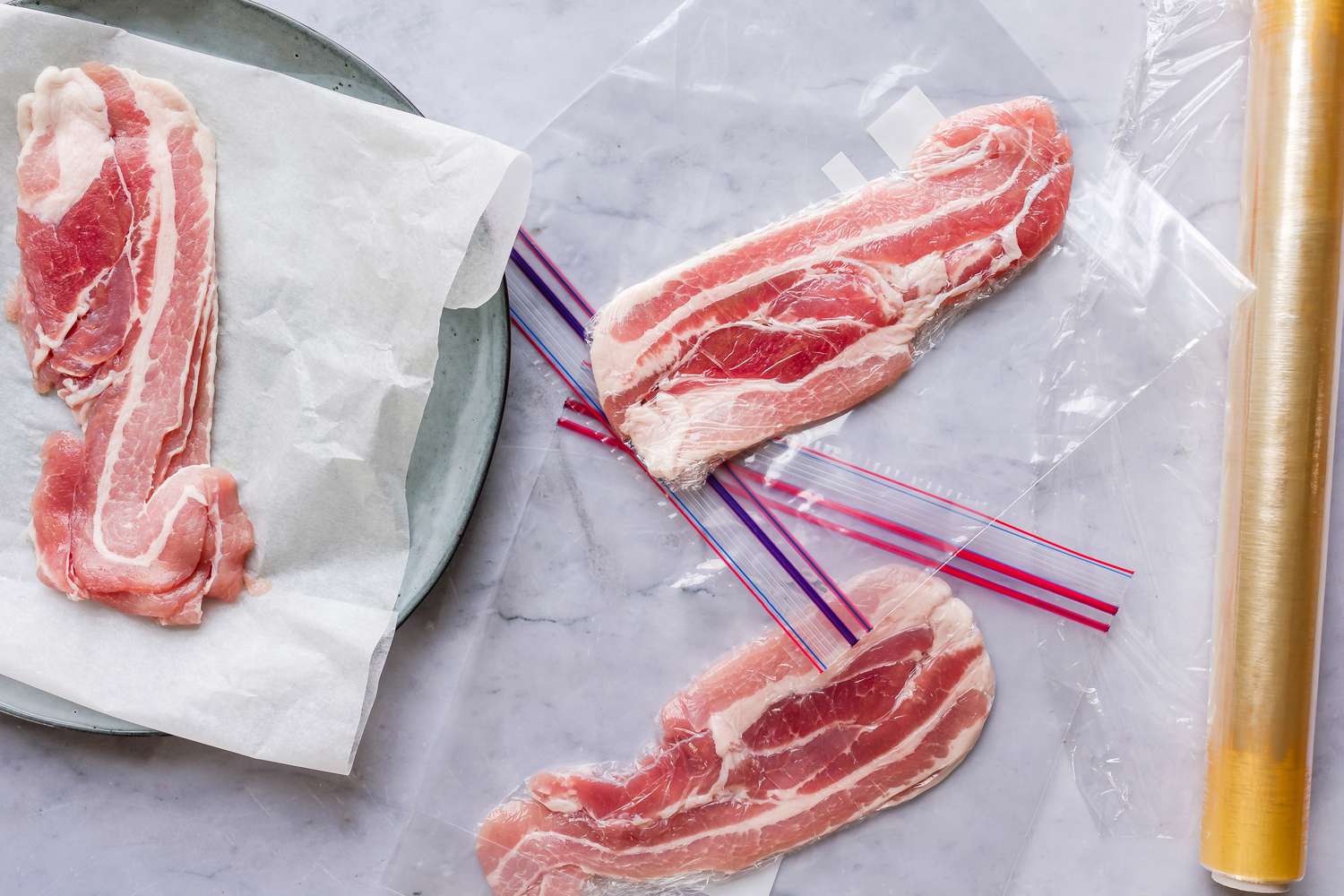
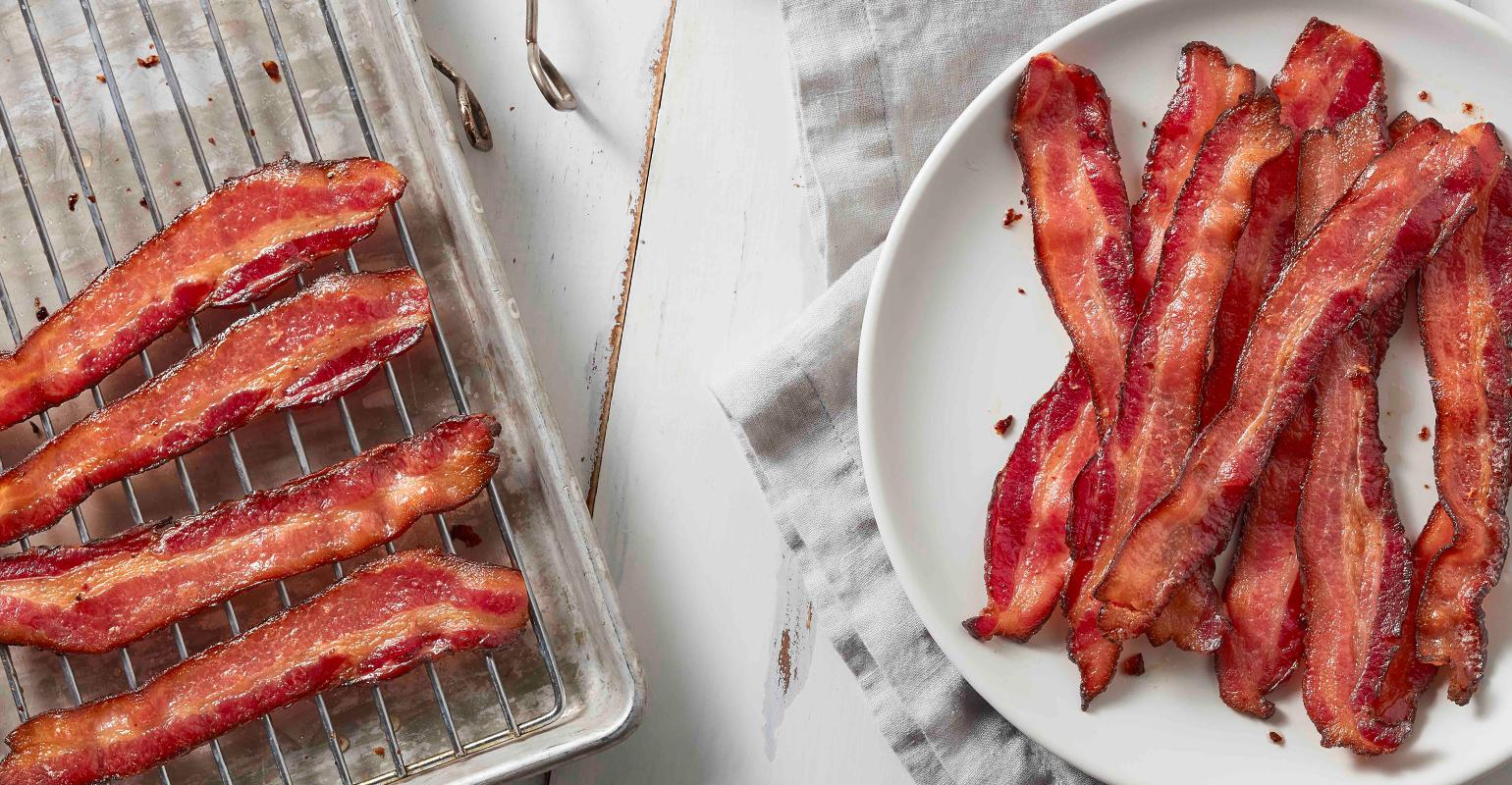

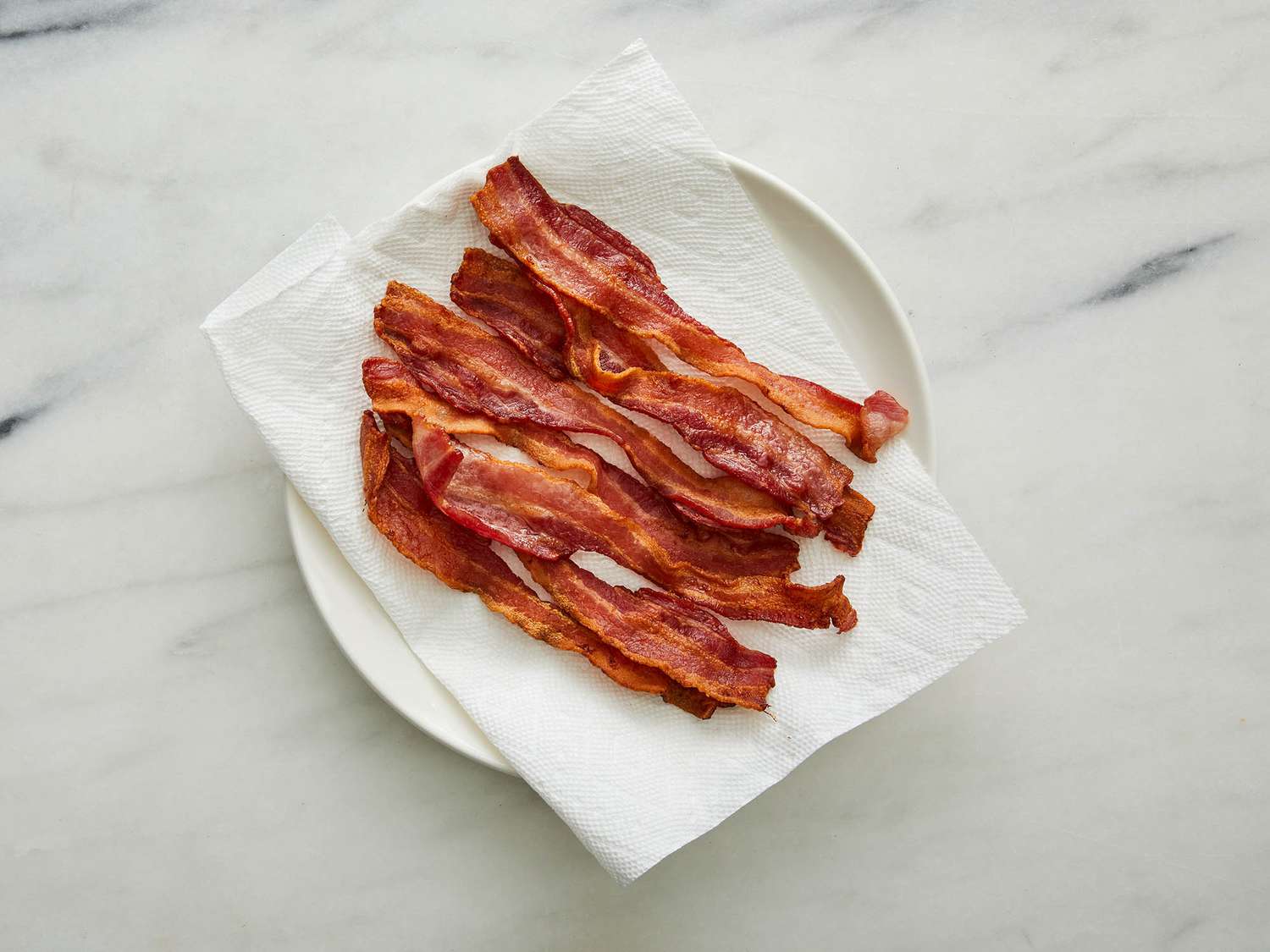
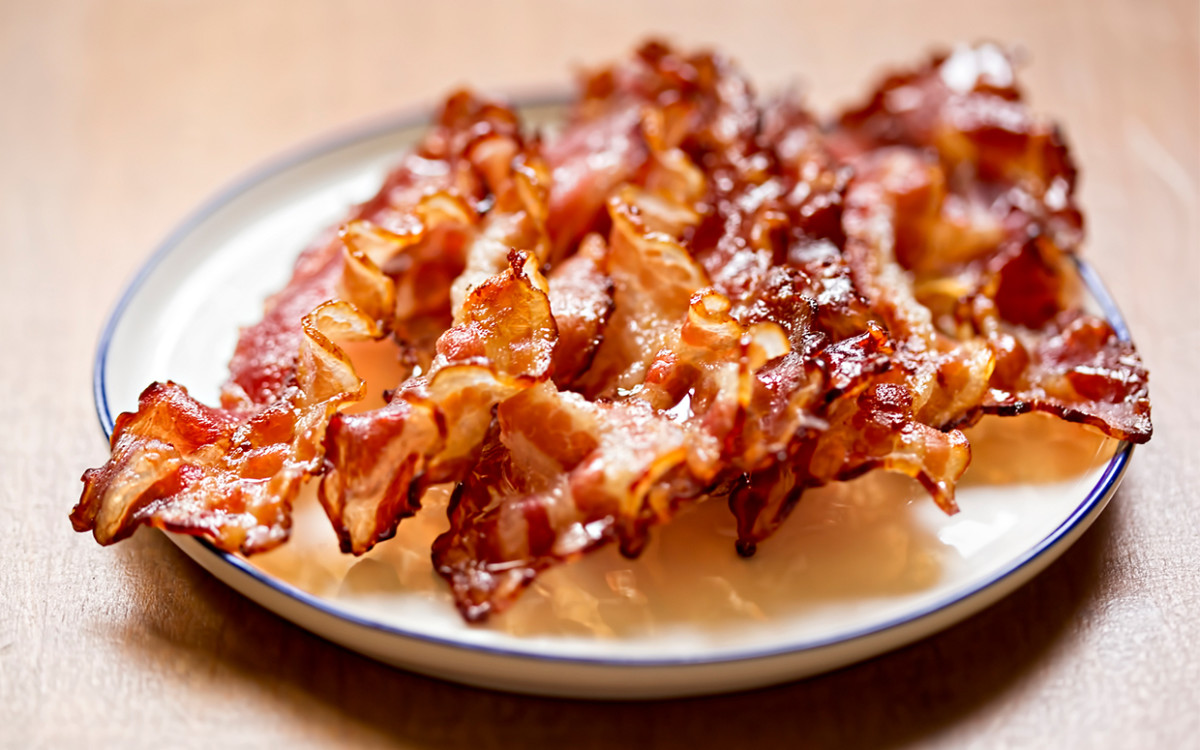
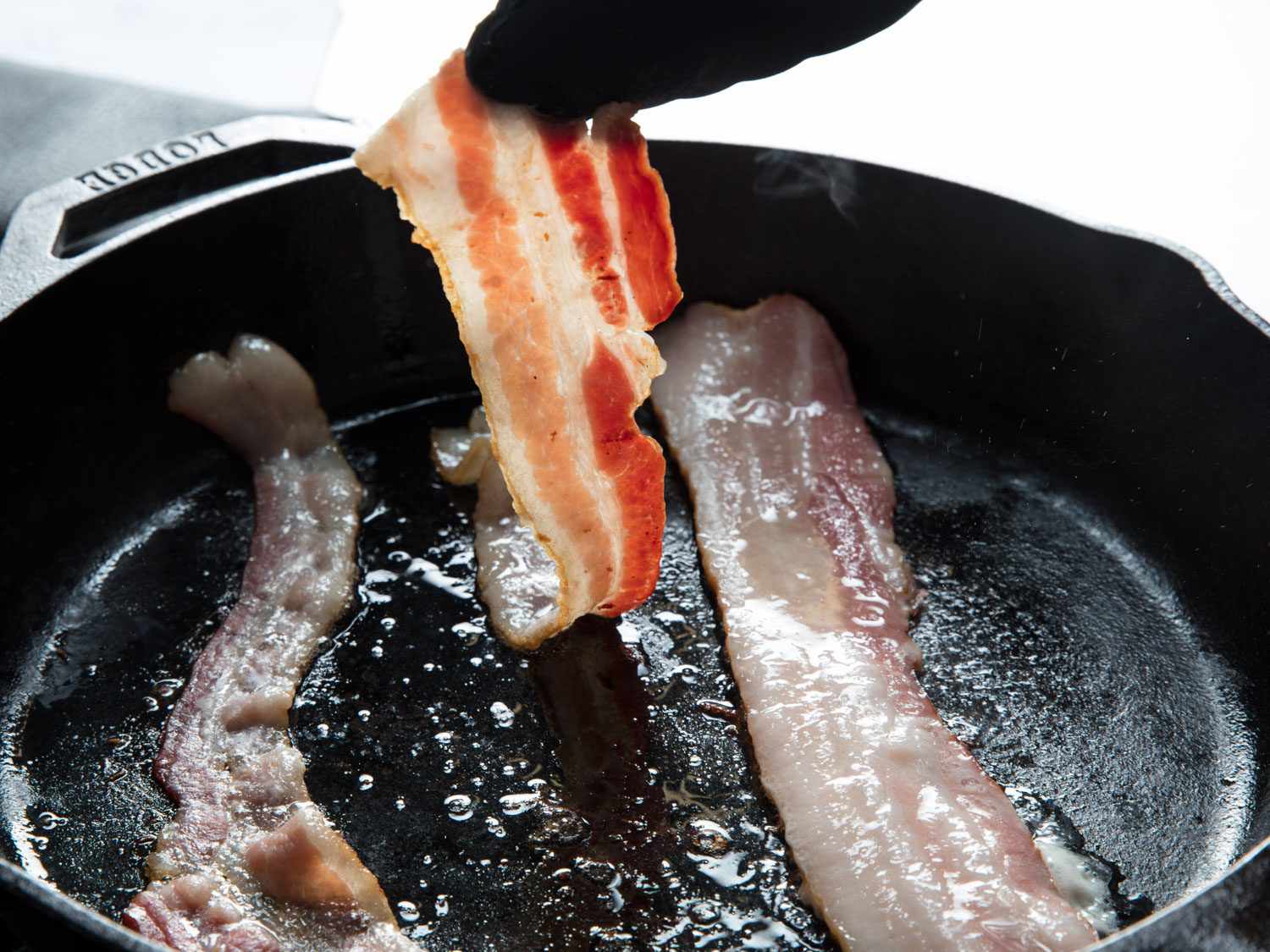
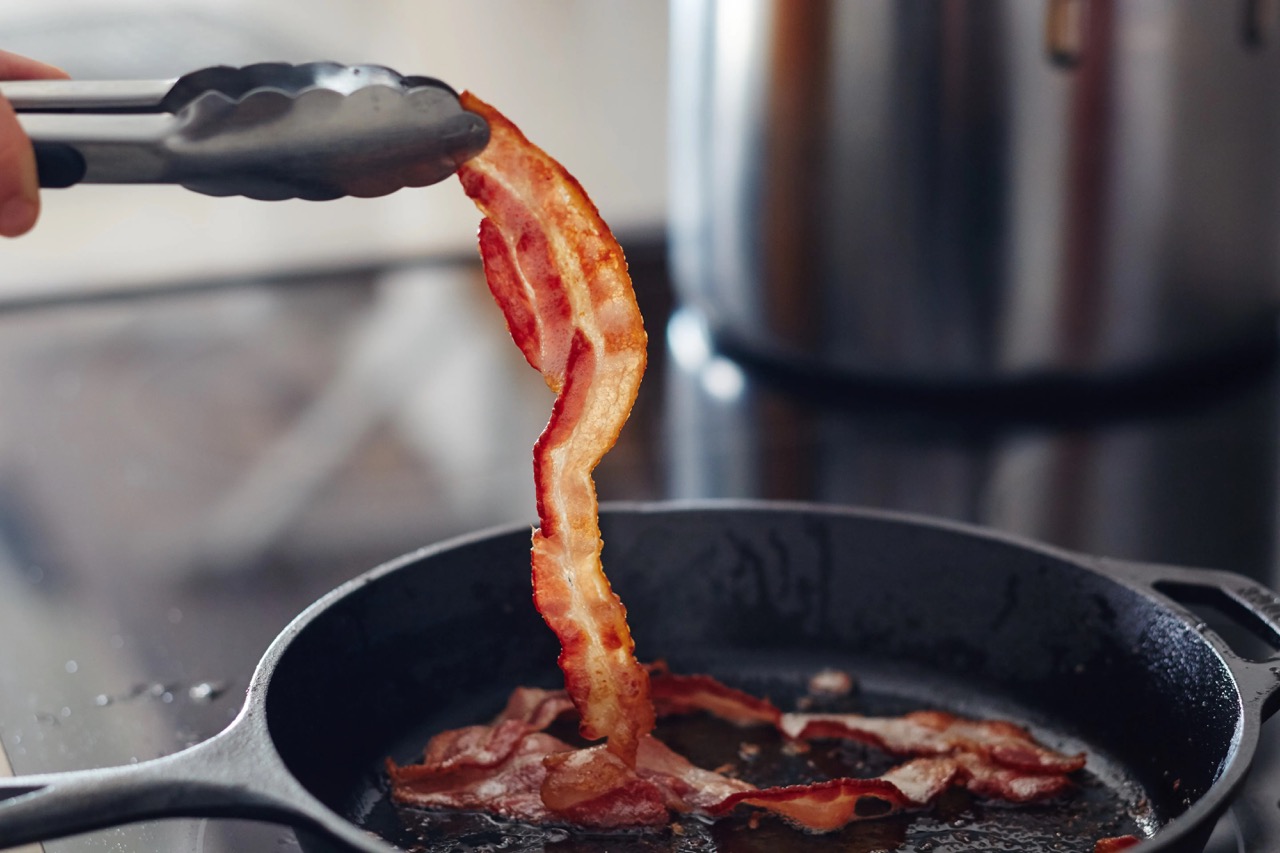
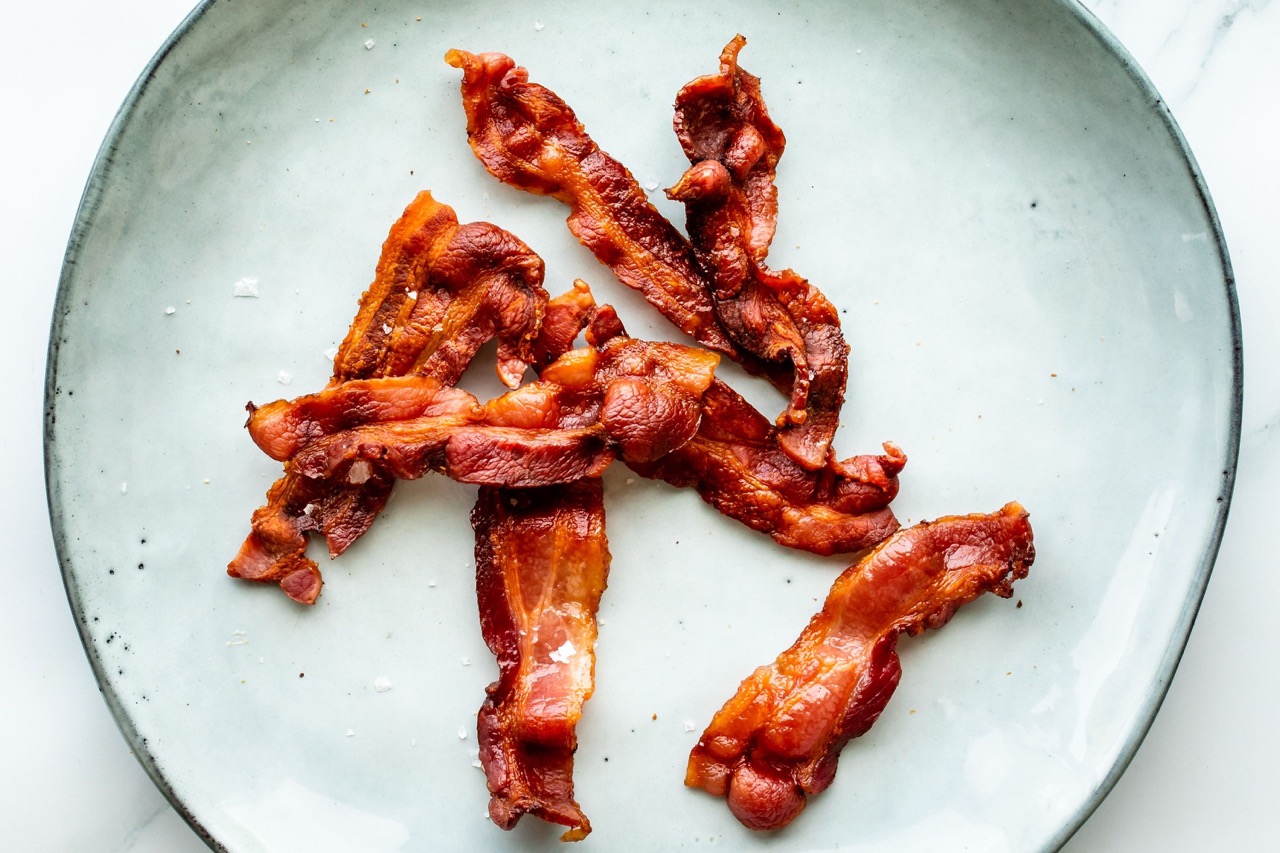


0 thoughts on “How To Store Bacon”